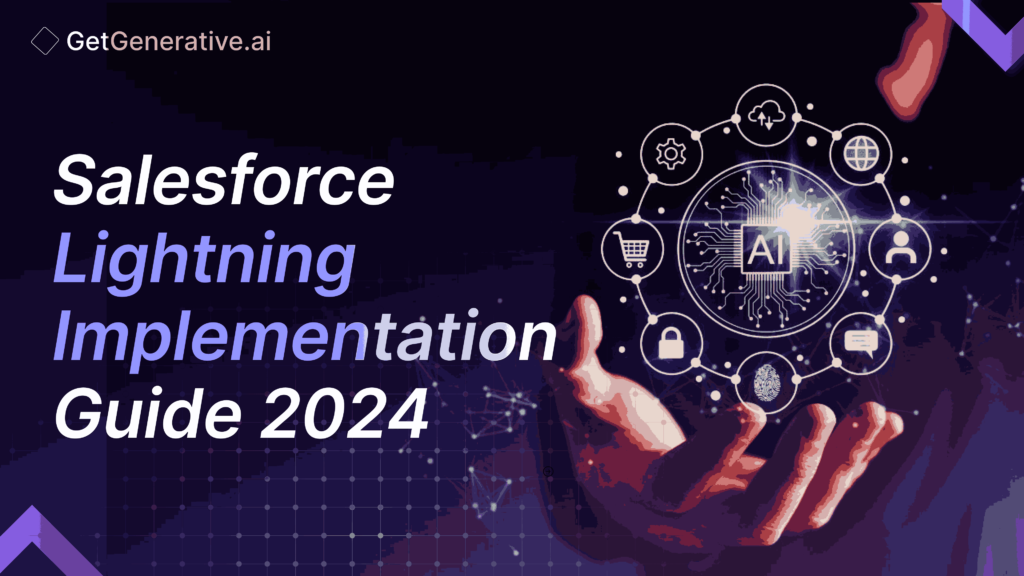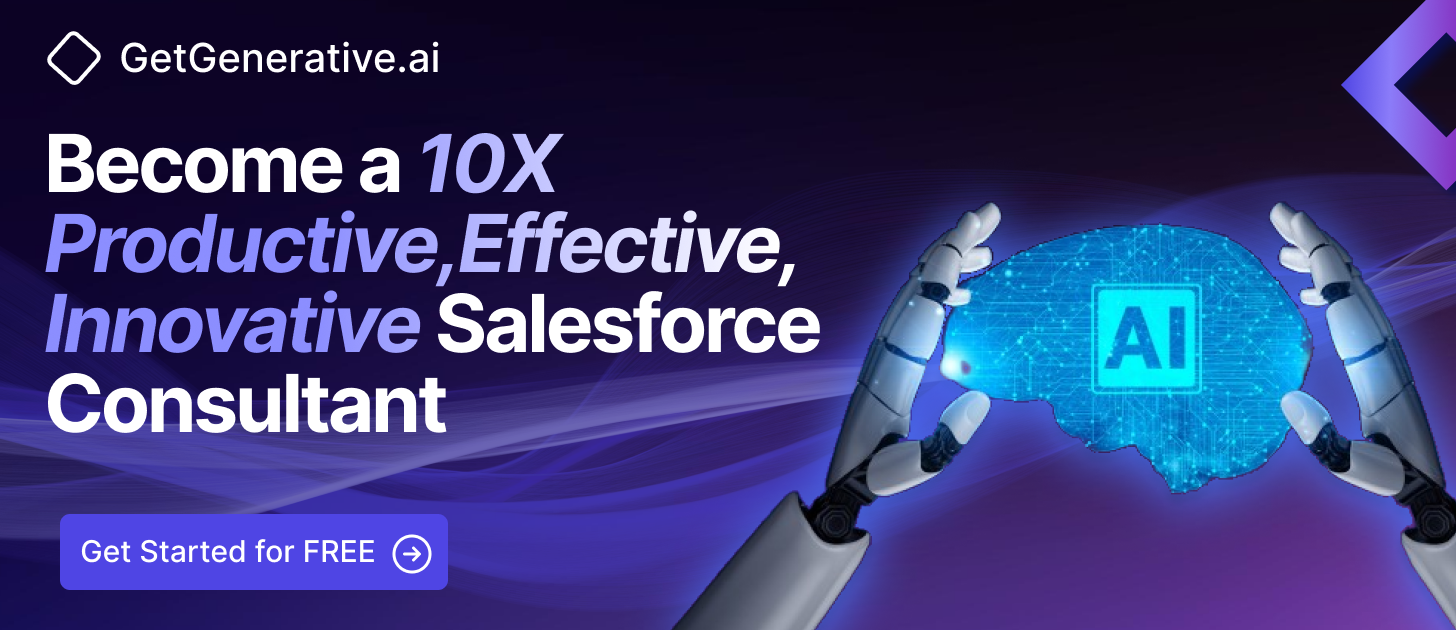Salesforce Lightning Implementation Guide 2024
In the ever-evolving world of customer relationship management (CRM), Salesforce has been a leading player for years. With the introduction of Salesforce Lightning, the platform has taken a giant leap forward regarding user experience, customization, and productivity. According to a study by Salesforce, companies that have adopted Lightning have seen a 41% increase in productivity and a 44% increase in user adoption.
Moreover, a survey by IDC found that Salesforce growth is expanding because of AI influence. These statistics highlight the significant impact that Lightning implementation can have on businesses. This blog post delves into Salesforce Lightning’s implementation, benefits, best practices, and common issues.
What is Salesforce Lightning?
Salesforce Lightning is a modern, component-based user interface that revolutionizes the way users interact with the Salesforce platform. It consists of several key elements that work together to provide a more intuitive, efficient, and customizable experience:
- Lightning Component Framework: This is the foundation of Lightning and allows developers to build reusable components using a combination of JavaScript, HTML, and CSS. These components can be easily assembled into custom pages and apps, enabling a more modular and flexible approach to application development.
- Lightning App Builder: This drag-and-drop interface enables users to create custom pages by combining pre-built and custom Lightning components. It provides a visual way to design and layout pages without extensive coding knowledge.
- Lightning Design System: This comprehensive UI framework provides a consistent look and feel across all Lightning pages and components. It includes many UI elements, such as buttons, forms, and icons, that adhere to Salesforce’s design principles and best practices.
- Lightning Console: This is an enhanced interface for service and sales users, providing a more streamlined and efficient way to manage multiple records and applications simultaneously. It features a tabbed interface, keyboard shortcuts, and a utility bar to quickly access frequently used tools.
- Lightning Bolt Solutions: These are pre-built, industry-specific templates that allow organizations to quickly deploy and customize Lightning pages and components for common business processes. They can significantly reduce the time and effort required to implement Lightning for specific use cases.
By leveraging these elements, Salesforce Lightning enables organizations to create highly customized and user-friendly experiences that can adapt to their unique business needs. The Lightning framework allows seamless integration with other Salesforce features, such as Einstein AI, Community Cloud, and AppExchange, further extending its capabilities and value.
How to implement Salesforce Lightning?
Implementing Salesforce Lightning involves a systematic approach to ensure a smooth transition and successful adoption. Here’s a detailed step-by-step guide:
Evaluate your current Salesforce org:
- Conduct a thorough analysis of your existing Salesforce implementation.
- Identify the custom objects, fields, workflows, and integrations in use.
- Determine which features and functionalities are critical to your business processes.
- Assess the readiness of your organization for lightning migration using tools like the Lightning Experience Readiness Check.
Create a project plan and timeline:
- Define clear objectives and goals for your Lightning implementation.
- Establish a project timeline that includes key milestones and deliverables.
- Identify the resources required, including personnel, budget, and technology.
- Assign roles and responsibilities to project team members.
- Develop a communication plan to keep stakeholders informed throughout the implementation process.
Related Read – Salesforce Implementation With AI Guide
Enable Lightning Experience in your Salesforce org:
- Turn on Lightning Experience in your Salesforce org settings.
- Set up a sandbox environment to test and validate Lightning functionality before deploying to production.
- Identify and resolve any compatibility issues with existing customizations and integrations.
- Ensure that all custom components, pages, and apps are Lightning-ready.
Customize the Lightning interface:
- Use the Lightning App Builder to create custom pages and layouts tailored to your organization’s needs.
- Leverage pre-built Lightning components and templates from the AppExchange to accelerate development.
- Develop custom Lightning components using the Lightning Component Framework for specific business requirements.
- Customize the Lightning Design System to align with your organization’s branding and style guidelines.
- Optimize Lightning pages and components for performance and mobile responsiveness.
Train your users:
- Develop a comprehensive training plan covering all Lightning functionality and navigation aspects.
- Conduct role-based training sessions to ensure each user group understands how Lightning impacts their job functions.
- Provide hands-on workshops and exercises to familiarize users with the new interface and features.
- Create user guides, video tutorials, and other supporting documentation for reference.
- Establish a support system, such as a help desk or user forum, to address any questions or issues during the transition.
Monitor user adoption and gather feedback:
- Track key metrics like user login rates, page views, and feature usage to measure adoption and engagement.
- Conduct user surveys and interviews to gather feedback on the Lightning experience and identify areas for improvement.
- Analyze support tickets and user inquiries to identify common pain points and challenges.
- Use insights from monitoring and feedback to refine and optimize your Lightning implementation continuously.
Iterate and scale:
- Prioritize and address any issues or enhancements identified during the monitoring and feedback phase.
- Develop a roadmap for future Lightning enhancements and updates based on user needs and business goals.
- As needed, scale your Lightning implementation to additional teams, departments, or business units.
- Establish governance processes to ensure consistency and maintainability of your Lightning implementation over time.
By following this structured approach, organizations can effectively implement Salesforce Lightning and realize its full potential for improved productivity, user experience, and business outcomes.
Also Read – Salesforce B2B Commerce Implementation Guide
Salesforce Lightning benefits
Salesforce Lightning offers a wide range of benefits that can significantly improve the way your organization uses Salesforce:
Improved user experience and productivity:
- Lightning provides a modern, intuitive, and streamlined user interface that is easier to navigate and use than Salesforce Classic.
- The Lightning App Builder allows users to create and customize pages using drag-and-drop functionality, reducing the time and effort required to build custom user interfaces.
- The Lightning Console provides a more efficient workspace for service and sales users. It allows them to manage multiple records and applications simultaneously, increasing productivity.
- Features like the Activity Timeline and Kanban view in Lightning help users visualize and manage their work more effectively.
Faster development and customization:
- The Lightning Component Framework enables developers to build reusable components that can be easily assembled into custom pages and applications.
- Modern web technologies like JavaScript, HTML, and CSS in Lightning development allow for faster and more efficient coding compared to traditional Visualforce pages.
- The Lightning Design System provides consistent UI components and design guidelines, reducing the time and effort required to create custom styles and layouts.
- The AppExchange offers a wide range of pre-built Lightning components, apps, and templates that can be easily installed and customized, accelerating the development process.
Better mobile responsiveness:
- Lightning is designed with a mobile-first approach, ensuring that pages and components are automatically optimized for different screen sizes and devices.
- The Lightning Design System includes responsive design principles and pre-built components that adapt to various form factors, providing a consistent experience across desktop and mobile.
- The Salesforce Mobile App, built on Lightning, provides a native mobile experience with offline capabilities, allowing users to access and update data on the go.
Enhanced security and performance:
- Lightning includes several security enhancements, such as improved session management, stricter cross-site scripting (XSS) protection, and the ability to set up content security policies (CSP).
- Lightning components are served from the Salesforce Content Delivery Network (CDN), which can improve page load times and performance.
- The Lightning Component Framework uses a stateful client and stateless server architecture, reducing the number of server round trips and improving overall application performance.
- Lightning’s performance optimization features, such as lazy loading and efficient data retrieval, help ensure faster response times and better scalability.
Access to Einstein AI and analytics:
- Lightning provides native integration with Einstein AI, Salesforce’s artificial intelligence platform, enabling users to leverage features like predictive analytics, natural language processing, and machine learning.
- Einstein features, such as Lead Scoring, Opportunity Insights, and Case Classification, can be easily embedded into Lightning pages and workflows, providing intelligent recommendations and automation.
- Lightning also includes powerful analytics tools, such as Reports and Dashboards, that allow users to gain valuable insights from their Salesforce data.
Improved collaboration and communication:
- Lightning enables users to collaborate more effectively using features like Chatter, allowing real-time updates, mentions, and file sharing within Salesforce records.
- The Lightning Utility Bar provides quick access to communication tools like email, phone, and social media, allowing users to engage with customers and colleagues without leaving the Salesforce interface.
- Lightning also integrates seamlessly with other Salesforce collaboration tools, such as Quip and Community Cloud, enabling teams to work together more efficiently.
By leveraging these benefits, organizations can significantly enhance their Salesforce experience, streamline their business processes, and drive better results.
Best practices in Salesforce Lightning
To ensure a successful Salesforce Lightning implementation, consider the following best practices:
- Clearly define your goals and requirements before starting the implementation process.
- Involve key stakeholders and end-users in the planning and design phases.
- Use a phased approach to roll out Lightning to different teams or departments.
- Leverage the AppExchange for pre-built components and apps to save time and effort.
- Regularly review and optimize your Lightning pages and components for better performance.
Common issues in Salesforce Lightning
While Salesforce Lightning offers many advantages, some common issues may arise during implementation:
- Compatibility issues with existing Salesforce customizations and integrations
- Performance issues due to poorly optimized components or pages
- User resistance to change and adoption challenges
- Limited customization options compared to Salesforce Classic
Conclusion
Salesforce Lightning implementation can significantly enhance your organization’s CRM experience and productivity. By understanding its features, benefits, and best practices, you can ensure a smooth transition and maximize the value of your Salesforce investment.
To learn more, visit getgenerativeai.com today.
Frequently Asked Questions (FAQs)
1. How long does it take to implement Salesforce Lightning?
The implementation timeline varies depending on the complexity of your org and the scope of customization required. It can take anywhere from a few weeks to several months.
2. Can I switch back to Salesforce Classic after implementing Lightning?
Yes, you can switch back to Classic if needed, but it’s recommended that you commit to Lightning to realize its full potential.
3. Is training necessary for users to adopt Salesforce Lightning?
Training is crucial to ensure that users understand and can effectively use the new interface and its features.
4. Can I use my existing Salesforce customizations in Lightning?
Most customizations can be carried over to Lightning, but some may require modifications or rebuilding to ensure compatibility.
5. Is Salesforce Lightning implementation expensive?
The cost of implementation varies depending on factors such as the size of your org, the extent of customization required, and whether you choose to work with a Salesforce partner or handle the implementation internally.


